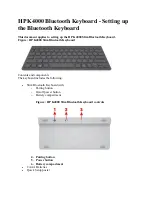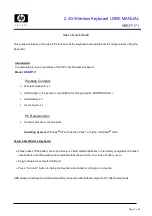
VEGA
23
A completely different matter is the fourth Voice of a Program: together with harmonization, with the same rules as those for
the other Voices, it can become a
Second Voice
and therefore enabled or disabled using the
2ND VOICE
push button.
To avail of this option, once you have moved onto the fourth Voice, press
F10 Harmony
twice. The first time it is pressed the
letter “
H
” will appear under the name of the voice, the second time it is pressed the Harmony setting is restored and the fourth
Voice is transformed into Second Voice, which will be pointed out by “
2nd
” under the name.
F2/F7 Volume:
This indicates the value of the volume for each single Voice that can be varied using the
VALUE +/-
push buttons which, if
pressed together at the same time, will set the value to zero.
F3/F8 Shift:
This is the transposition value in semitones (+/- 63) that can be modified using the
VALUE +/-
push buttons which, if pressed
together at the same time, will set the value to zero.
F4/F9 Tune:
This is the fine tuning value (+/- 63 steps corresponding to one semitone), that can be modified using the
VALUE +/-
push
buttons which, if pressed together at the same time, will set the value to zero.
F5/F10 Pan:
This is the Pan pot value on the stereo front (+/- 64) that can be modified using the
VALUE +/-
push buttons which, if pressed
together at the same time, will set the value to zero. Zero corresponds to the middle position.
PAGE 2
The second page is used to set the entity of the effects for the single Voices. For all four Voices the Send for the Reverb is always available
whereas the other parameters available depend on the type of algorithm selected for the Effect which, in this case, can work as a multi-effect
unit with distortion, chorus and delay algorithms combined in five different ways. When the Effect is enabled on a Voice, the musician may also
establish which algorithm of the multi-effect the Voice should use. The choice of the type of multi-effect is made using the
/-
push
buttons and the combination of algorithms is shown directly on the display via which the musician can find out which algorithms are set in
series (the output of the first enters in the second effect) or in parallel (the output of the effect goes directly to the audio output).
Let’s take this combination as an example:
Delay > Chorus •Chorus
In this case there are two effects set in parallel with each other, namely:
1 - Delay > Chorus
2 - Chorus
with two effects in series with each other where a Delay enters in a Chorus.
If this multi-effect should be selected, there would be two selection possibilities in the Effect parameter: Delay > Chorus and Chorus.
The five multi-effects available, of which only one however can be used for a Program, are:
Chorus / Distorsor / Delay
Distorsor > Chorus / Chorus
Delay > Chorus / Chorus
Distorsor > Delay / Chorus / Delay
Distorsor > Delay > Chorus / Delay > Chorus / Chorus
F1/F6 Voice:
This indicates the voice used for the Voice selected. To change it refer to all explanations for page 1.
F2/F7 Reverb:
This controls the Reverb entity for each Voice, that can be modified using the
VALUE +/-
buttons which, if pressed
together at the same time, will set the value to zero.
F3/F8 Effect:
This enables the multi-effect and is used to choose which algorithm of the multi-effect will be used for the Voice,
using the
VALUE +/-
push buttons.
F4/F9 Amount:
This controls the signal entity to be sent to the multi-effect and, in particular, to the pre-selected algorithm, that
can be modified using the
VALUE +/-
buttons which, if pressed together at the same time, will set the value to zero.
F5/F10 Delay and Chorus:
These control the signal entity to be sent to the delay or the chorus, when an appropriate algorithm has been
selected. Compared to all seen up to here, the parameters within the horizontal lines are only called up using the
function push button
F5/F10
, as there is no function push button available for the last line.
Program and One Touch Voices
Summary of Contents for Ketron
Page 1: ...Owner s Manual I n g l e s e VEGA VEGA VEGA...
Page 3: ......
Page 94: ...Technical Tables...
Page 95: ......
Page 97: ......
Page 117: ...VEGA 116...
Page 118: ...VEGA 117 Notes...
Page 119: ...VEGA 118 Notes...
Page 120: ...VEGA 119 Notes...
Page 121: ...VEGA 120 Stampa FLAMINI srl Osimo AN 12 2002...
















































